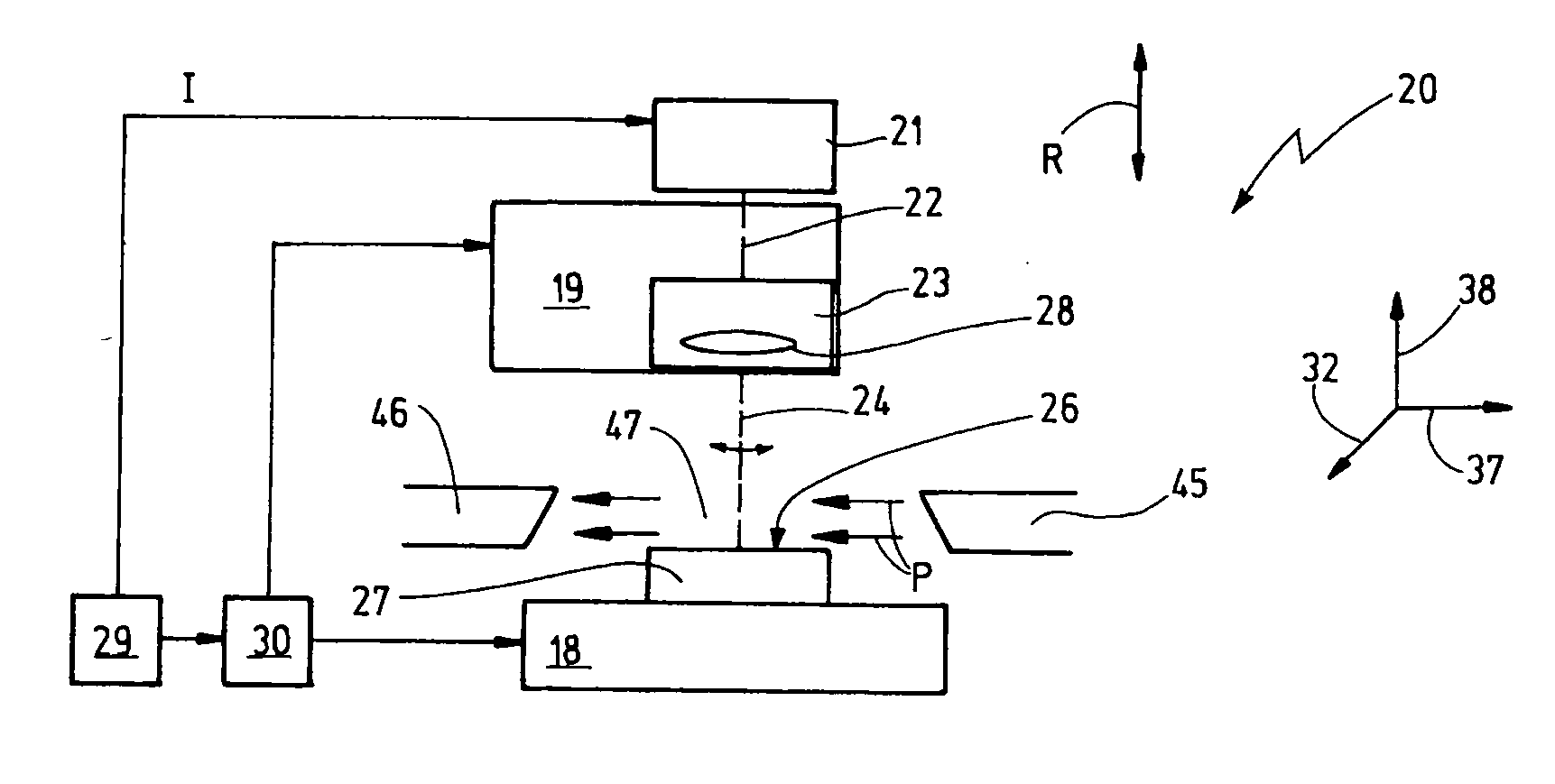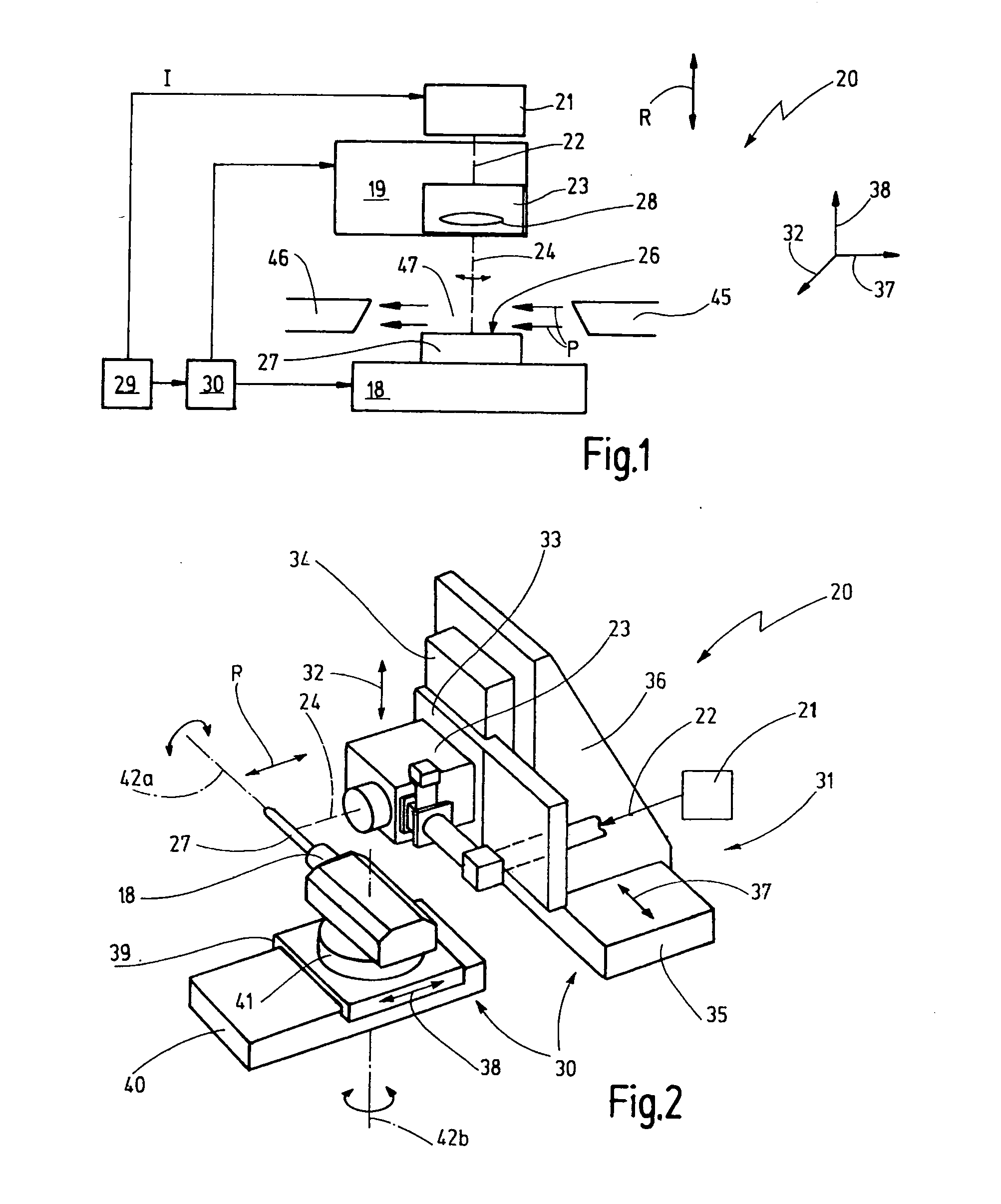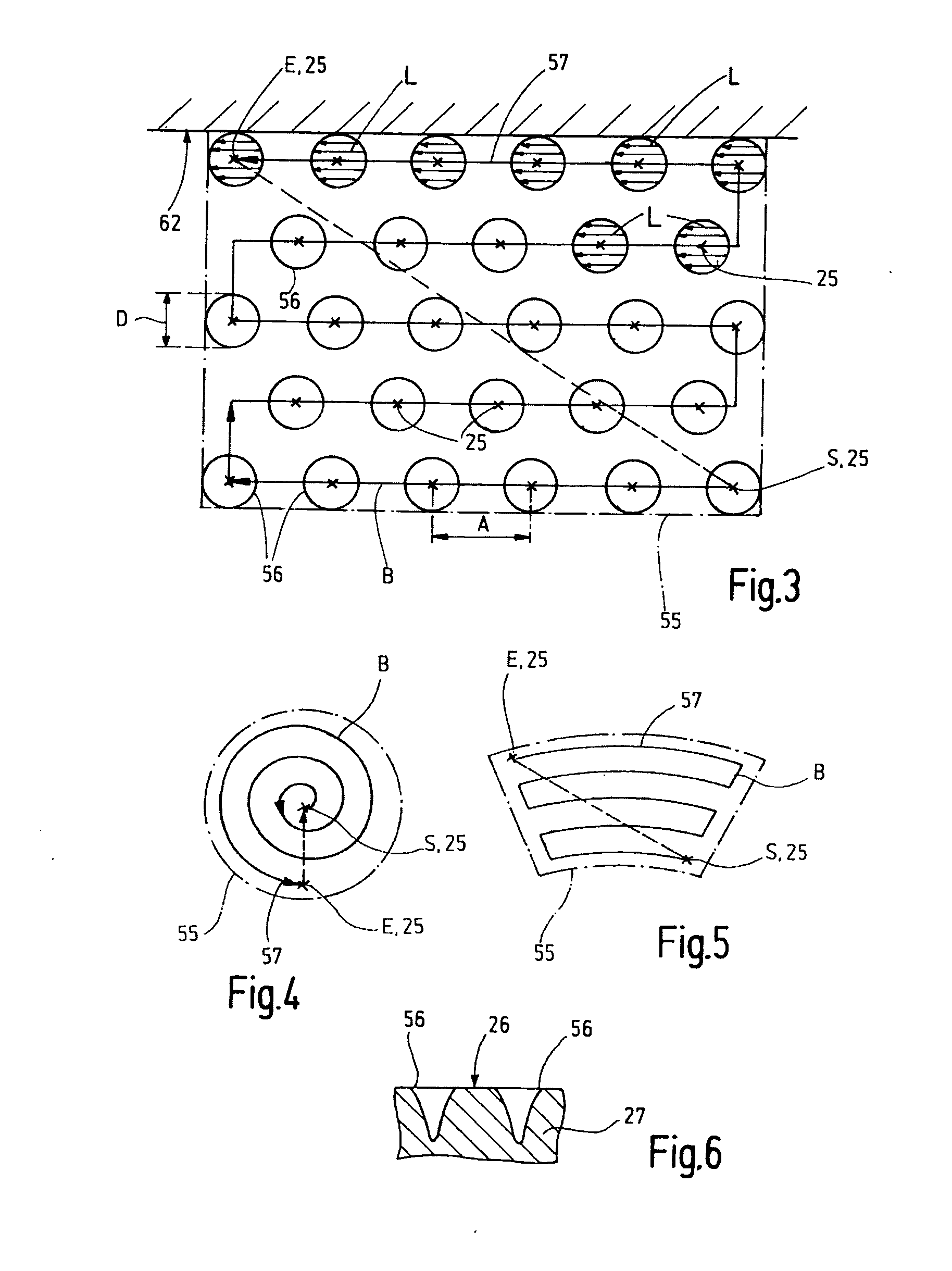Laser machining apparatus and method for forming a surface on an unifinished product
a technology of laser machining and unfinished products, which is applied in the direction of metal-working equipment, welding equipment, manufacturing tools, etc., can solve the problems of material ablation in the pulse area, and achieve the effect of optimal ablation ra
- Summary
- Abstract
- Description
- Claims
- Application Information
AI Technical Summary
Benefits of technology
Problems solved by technology
Method used
Image
Examples
Embodiment Construction
[0032]FIG. 1 shows schematically a laser machining arrangement 20. The laser machining arrangement 20 includes a pulsed laser 21 which generates a pulsed laser beam 22 and directs it to a laser head 19 with a re-directing arrangement 23. The redirecting arrangement 23 can change the orientation of the laser beam impulses 24 and direct the laser beam pulse 24 onto a predetermined impact area 25 of a surface 26 of an unfinished object 27. The redirecting arrangement 23 may also be called a scanner arrangement. It includes also a focusing optical system 28. The unfinished object 27 is disposed in an accommodation area 47.
[0033]The laser machining arrangement 20 also includes a control unit 29 which controls a positioning arrangement 30 by which a relative position between the laser head 19 and the unfinished object can be adjusted and changed. The number of linear axes and axes of rotation of the positioning arrangement 30 may vary. In the preferred embodiment, the positioning arrangem...
PUM
| Property | Measurement | Unit |
|---|---|---|
| inclination angle | aaaaa | aaaaa |
| inclination angle | aaaaa | aaaaa |
| frequency | aaaaa | aaaaa |
Abstract
Description
Claims
Application Information
 Login to View More
Login to View More - R&D
- Intellectual Property
- Life Sciences
- Materials
- Tech Scout
- Unparalleled Data Quality
- Higher Quality Content
- 60% Fewer Hallucinations
Browse by: Latest US Patents, China's latest patents, Technical Efficacy Thesaurus, Application Domain, Technology Topic, Popular Technical Reports.
© 2025 PatSnap. All rights reserved.Legal|Privacy policy|Modern Slavery Act Transparency Statement|Sitemap|About US| Contact US: help@patsnap.com



